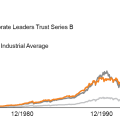What Is a Mutual Fund And How To Invest In It? Finding The Best Mutual Funds For Your Money
What Is A Mutual Fund And How Does It Work?
A mutual fund is an investment company that allows a company to pool money from its investors and put it in various securities and financial instruments such as bonds, stocks, short-term debt, commodities, and stuff like these. All the holdings of any mutual fund are commonly referred to as a portfolio. Investors are allowed to buy shares in mutual funds and then each share the investor buys represents her portion of ownership in the fund and the revenue it generates. Mutual funds offer to ordinary people the opportunity for potential diversification and professional investment management.
Mutual funds are open-end companies. This means that they issue new shares each time a new investor wants to invest in the fund and buy back the investor’s shares when she wants to withdraw her money. You can only buy shares issued by the fund (this may happen with the help of an intermediary), and the fund is obligated to buy back these shares from you anytime you want.
The funds also offer 3 different ways for you to earn money:
* Dividend Payments -Your investment will earn money from interest on bonds or dividends on stock. Then the fund pays all the investors all the income generated less the expenses.
* Capital Gains Distributions -The value of securities sometimes do increase and when a security that has increased in price is sold, the fund usually has a capital gain. When the financial year comes to an end, the fund distributes all the capital gains less any losses.
* Bigger NAV – If the market price of a portfolio rises, after the expenses have been deducted, the entire price of the fund and the shares rise. A higher NAV (net asset value of the fund) reflects a higher value of your initial investment.
So it does not matter whether you are planning for your child’s education, house, marriage or a vacation in the Bahamas, this type of fund is in some cases tax efficient, simple, and an effective tool to put your money in for long-term goals. Besides that, the funds also offer a wide array of investment options including hybrid schemes, equity schemes, money market schemes, fixed-income schemes, and ETFs. You can choose depending on your needs.
Types and Classification of Mutual Funds
There are four main types of mutual funds: bond funds, stock funds, target date funds, and money markets funds. Each category has different risks, rewards, and features.
1. Money Market funds
These types of mutual funds have very minimal risks. They can only invest in high-quality and short-term investments issued by corporations, local state, and federal governments. These are usually treasury notes issued by the government or short-term bonds issued by big and stable corporations. They pay their earnings as regular dividends, which are nearly the same as what an investor would get if she invested her money directly in the securities the fund owns.
2. Bond funds
Bond funds aim to generate higher income than money market funds which automatically makes them riskier than money market. However, bonds are relatively predictable and stable financial instruments, which makes them attractive to many investors.
3. Stock funds
Stock funds usually invest in corporate stocks. They are relatively the riskier type, but also have the highest potential return on investment. But not all of them are the same. Some examples of stock funds include:
· Growth funds– Concentrate on corporate stocks that do not pay dividends regularly but have promising financial gains. These are usually corporations that have huge potential for growth in market capitalization, which will bring capital gains to the fund and its investors.
· Income funds-This type of stock fund usually invests in corporate stocks that only pay regular dividends.
· Index funds-They track a specific market index like the Standard and Poor’s 500 index or The Dow Jones Industrial Average Index.
· Sector funds-These types of funds usually specialize in a specific segment in the industry.
4. Target-date funds
They hold a mix of bonds, stocks, and other related investments. The mix usually shifts with time according to the strategy involved. Sometimes known as lifecycle funds, target-date funds are designed for people with specific retirement dates.
Advantages of Mutual Funds
Professional management – when you put your money in this fund, you are assured that your investment is managed by finance professionals. Investors who don’t have the skill or time required to manage their portfolio can utilize this opportunity to make some easy money. This way they acquire professional services from experts in the field which can be very costly for a single investor.
Diversification – mutual funds provide diversification across various companies and sectors. This means if you invest in this fund, you are likely to gain from all the benefits of asset allocation and diversification without investing the whole amount required to develop an individual portfolio.
Liquidity – mutual funds are very liquid investments. Your money is always available to you in case you want to exit the load especially when there is no specified lock-in period.
Well-regulated -to safeguard the interests of the investors mutual- funds are usually controlled by various regulatory bodies.
Transparency – these funds issue very detailed reports about the investments they make, their portfolio changes, and their operations as a whole.
Disadvantages of investing in mutual funds
All investments have some level of risk. With this type of fund, you can lose all or some of your money because all the securities held by the fund can drop in value. Interest or dividend payments can also change with the market conditions.
It is hard to predict a fund’s performance. Looking at a fund’s performance may not give a clue of its future performance as this does not predict future returns. However, it can tell you how stable or volatile the fund has been over a specific time frame. The more volatile the performance is the higher the risk.
Taxes
If a mutual fund sells an asset with profit, at the end of the year, each investor owes Uncle Sam tax on this profit, which is equal to the percentage of shares the investor owns. In this case, the investor doesn’t get a part of the profit directly but has to pay the tax for it. The same happens when a stock from the portfolio of the fund pays dividends.
How to Invest in Mutual Fund
You can invest in such a fund either online through AMCs or offline by physically walking into any branch of a mutual fund firm or through a financial intermediary that offers from its shares. A financial intermediary can be a brokerage house, a third-party distributor, IFAs, or a bank. Individual finance advisors are certified ARN holders of AMFI and can suggest a suitable portfolio for any risk appetite investor. The fund usually sends money within one week. Before you purchase shares in any mutual fund scheme, take time to read the prospectus. It has information about the fund’s investment risk, expenses, performance, and objectives.
Some useful resources for mutual funds investors
Investing in mutual funds can be a great way to diversify your portfolio and achieve your investment goals. With so many different funds to choose from, however, it’s important to select the right ones for your individual needs. The best resources for mutual fund investors can help you make the best decisions and ensure you are investing in the correct funds.
The first resource to consider is the Mutual Fund Screener, an online tool from Morningstar. It allows you to easily filter through the more than 25,000 different funds available to investors, giving you the ability to identify the perfect fund for you based on your personal criteria. It’s easy to use and allows you to search on a number of specific items, from fees and performance to portfolio makeup and ratings.
Another great place to start is Investor Advisory Services. Here, you’ll find a wide range of services for mutual fund investors. With the help of dedicated advisers, you’ll have access to the latest news and research, learn the basics of investing, reduce costs and make sound investment decisions. The online Learning Center also provides great educational content, such as investing tips, instructional videos, and useful comparisons between different investments.
The third resource we recommend is SEC’s Mutual Fund Investors Information Center. This site provides detailed information on mutual funds, including different fund categories, costs, and portfolio composition. It also includes a section of investor education videos and materials, with everything from the basics of investing to in-depth fund analysis.
Finally, The Investment Company Institute (ICI) is an organization dedicated to representing the interests of mutual funds and their investors. The ICI website provides a wealth of information on the various types of mutual funds, their performance, and tips on investing. There is also an extensive library of articles, research, and educational material available to mutual fund investors.
This was a nice basic explanation of mutual funds. If you need to learn more about them, you can read this e-book written by the SEC on the matter. It’s a really nice and interesting reading: HERE.








